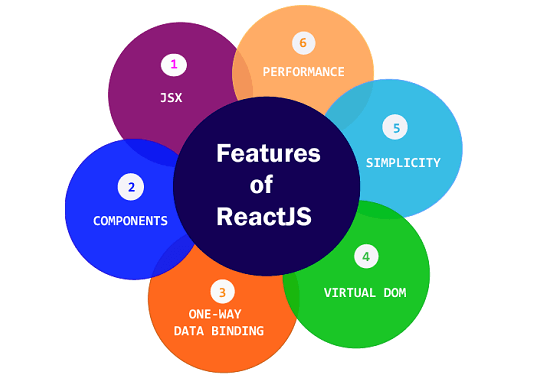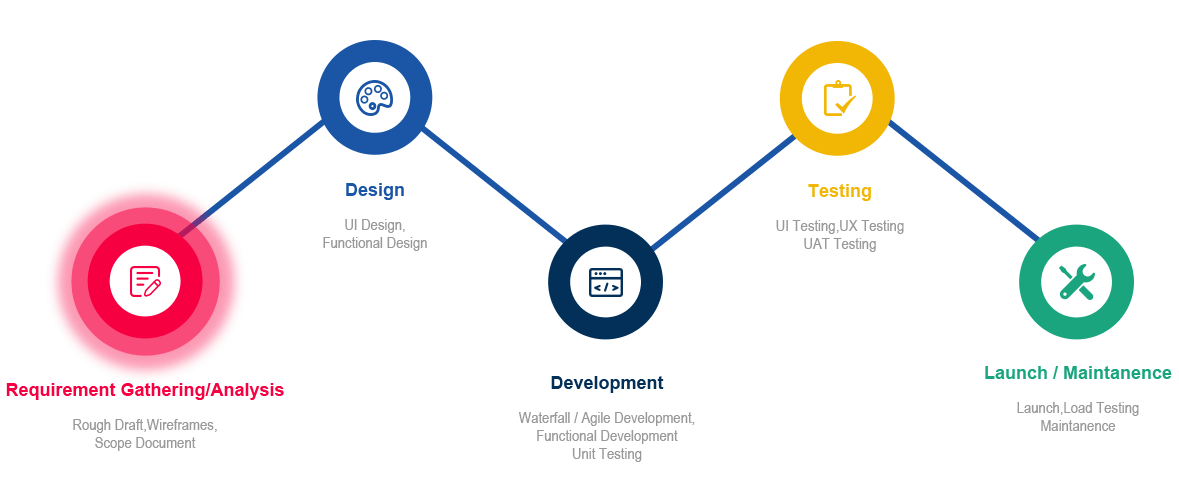Proficient React.Js Company

ReactJS, an open-source JavaScript library, is widely recognized for its ability to build responsive web applications across multiple platforms. As a reputable ReactJS Development Company, we boast a team of highly skilled and experienced software developers specialized in ReactJS app development. We are committed to providing top-notch solutions and services to enhance your project development and ensure optimal delivery.
Nova has a proficient and talented team of React Website Developers who continuously strive to implement new techniques and innovations, driving towards business-driven applications. We are dedicated to delivering high-performance and visionary React Software Development Services tailored to your specific React Programming Language requirements.
Our Node.JS Framework

Redux
To create applications that exhibit consistent behavior, run seamlessly across various environments (client, server, and Native), and facilitate smooth testing processes.

Gatsby
Gatsby, a highly renowned static site generator built on React, provides a wide range of popular and developer-friendly plugins.

Next.js
If you are seeking a React-based solution for static-site generation, server-side rendering, and serverless deployment, this is an excellent choice.

TypeScript
Utilizing TypeScript in conjunction with React can lead to accelerated development, enhanced code legibility, and a plethora of other benefits.
React Native
This is an outstanding option for building mobile applications that can be readily deployed on both Apple and Google Play stores.
Our React Services



We Always Try To Understand Users' Expectation
Nova's Strength on React Development
Our accumulated experience includes not only numerous outsourcing projects but also self-developed products, all of which are built using React as the front-end framework. We have overcome various challenges and accumulated valuable experience, successfully delivering quality products to our clients. Therefore, Nova has the sufficient capability, both in project experience and personnel resources, to accomplish our clients’ goals.
React boasts a vast ecosystem with a highly active community, encompassing numerous useful open-source libraries, tools, and solutions. This allows us to choose and leverage third-party components and libraries that best suit our project needs, saving development time and enhancing efficiency.
React adopts a component-based development approach, breaking user interfaces into independent and reusable components. This empowers our development team to rapidly build complex interfaces and makes the code easier to maintain and extend. By constructing and managing a reusable component library, we can provide higher-quality code and faster development speed for different client projects.
React follows a one-way data flow pattern, enabling more control and predictability over data state changes. This data flow pattern is particularly beneficial for collaborative development, as is the case in our team-oriented environment. With clear data flow directions, team members can better understand and debug the code, reducing potential conflicts and errors.
React utilizes virtual DOM technology to maintain a lightweight representation of the DOM in memory. It efficiently calculates and updates only the parts that have changed, providing fast page rendering and responsiveness. For us, this means better performance and user experience when developing and maintaining large-scale applications.
React also offers the React Native framework, allowing developers to build cross-platform mobile applications using React’s component-based development approach. This enables us to leverage similar technology stacks in mobile app development and utilize shared code and knowledge, enhancing development efficiency.
- 1-3 years of software developing experience.
- Initiatives in communication and implementing tasks as assigned.
- 3-5 years of software developing and project managing experience.
- Can work independently or lead small teams
- Work in aspects of requirements, architecture, development, testing, deployment, etc.
- Can help clients achieve their goals.
- 6+ years of developing and project management experience.
- Can provide professional advice in the context of the client's business.
- Can manage a large team.
- Can take ownership of leading the team to achieve the client's business goals.

Main Features of Node.JS
React is an open-source JavaScript library developed by Facebook. It focuses on building user interfaces and allows developers to efficiently create interactive and highly responsive web applications using a component-based approach and declarative syntax.
 Component-based Development
Component-based DevelopmentReact divides the user interface into multiple independent components, with each component responsible for managing its own state and rendering logic. This component-based development approach makes the code easier to understand, reuse, and maintain, thus accelerating development speed.
 Virtual DOM
Virtual DOMReact utilizes virtual DOM technology to perform DOM operations with minimal performance overhead. It maintains a virtual DOM tree in memory and compares the differences in virtual DOM states between the previous and current versions. It then updates only the parts of the DOM that have changed, resulting in improved page rendering efficiency.
 One-Way Data Flow
One-Way Data FlowReact adopts a one-way data flow pattern, making data state changes more predictable and controllable. The parent component passes data to its child components through props. After the child components manipulate the data, they notify the parent component to update through callback functions.
 JSX Syntax
JSX SyntaxReact introduces JSX syntax, which allows developers to directly write HTML-like structures in JavaScript code. This enables developers to describe the page structure and interaction behavior more intuitively in the code while enjoying the powerful programming capabilities of JavaScript.






